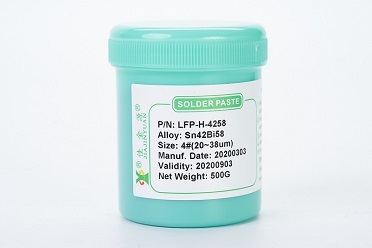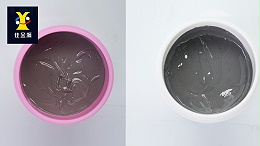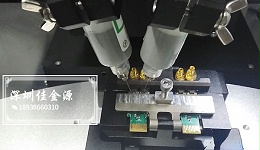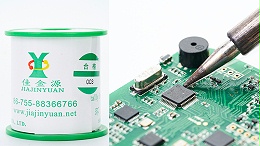
Recently, there has been a public opinion online that "Lenovo laptops have gone black and crashed due to the use of low-temperature solder paste for desoldering." So, is it really unreliable to use low-temperature solder paste on laptops? Today, the solder paste manufacturer will show you the problems existing in the use of low-temperature solder paste in laptops:

20From the 20th century until the beginning of this century, medium-temperature soldering with tin and lead as the main components has always been the mainstream of other types of soldering, among which the ratio of tin to lead is63:37Its melting point is183℃It shows excellent performance and is therefore very popular. However, it has a relatively high lead content. Prolonged exposure without protection is harmful to the body and is not environmentally friendly.
To reduce the harm of lead, the electronics industry has2006Since the year, lead-free high-temperature soldering andSnTin proportion99%Lead-free solder paste, of course, the cost of this alternative is that the melting point of the solder is relatively high, for exampleSn99.3Cu0.7The solder joint is approximately217℃This may increase the damage to electronic components, make surface mount soldering more difficult, and also lead to a significant increase in energy consumption.
Due to the excessively high melting point of high-temperature lead-free solder, it is being carried outSMTWhen reflow soldering, the temperature should rise to250℃Sure. For environmental protection and welding considerations, low-temperature lead-free solder was born. tin+Low-temperature solder paste of bismuth, melting point138℃It has been significantly reduced compared to before, while also meeting the requirements of environmental protection and welding.
Can low-temperature solder paste be used in laptops
By understanding the birth of low-temperature soldering, we should come to a valid conclusion: laptops can use low-temperature solder paste. The part of a laptop that has the highest power and is most prone to heat generation during use isCPUAndCPUThe temperature is usually maintained at during normal operation40~75℃Between. The normal operating environment temperature of a computer cannot even reach the melting point of low-temperature solder138℃Even when running software with high performance requirements, it can only be achieved90℃The temperature on both sides, so the low-temperature solder cannot be melted with the temperature of a laptop.
Lead toCPUSeveral possible reasons for false soldering
1,SMTThere were problems with the reflow soldering process, such as incorrect control of the temperature curve and poor soldering. Or the strength of the solder joint is far from sufficient due to reasons such as incomplete evaporation of flux, excessive deformation forming stress, etc.
2To cut costs, poor-quality low-temperature lead-free solder paste was used without adding any other elements to enhance performance.
3,CPUSubstrate, mainboardPCBThe fiberglass board is too thin, causing excessive thermal expansion and contraction deformation and excessive longitudinal deformation due to being pressed by the heat sink, which leads to weld cracking.
4,CPUPoor heat dissipation, failure to clean the notebook regularly, and failure to apply dry silicone grease, etc., all these factors have caused the problemCPUWhen the temperature is too high, the deformation is excessive, and the weld points are repeatedly pulled. Solder metal fatigue eventually leads to a false solder.
This incident is not becauseLow-temperature solder pasteIt is not suitable for laptops. For other reasons, there is no need to be prejudged against low-temperature solder paste. In fact, low-temperature solder paste has excellent printability and can effectively eliminate omissions and depressions during the printing process.



